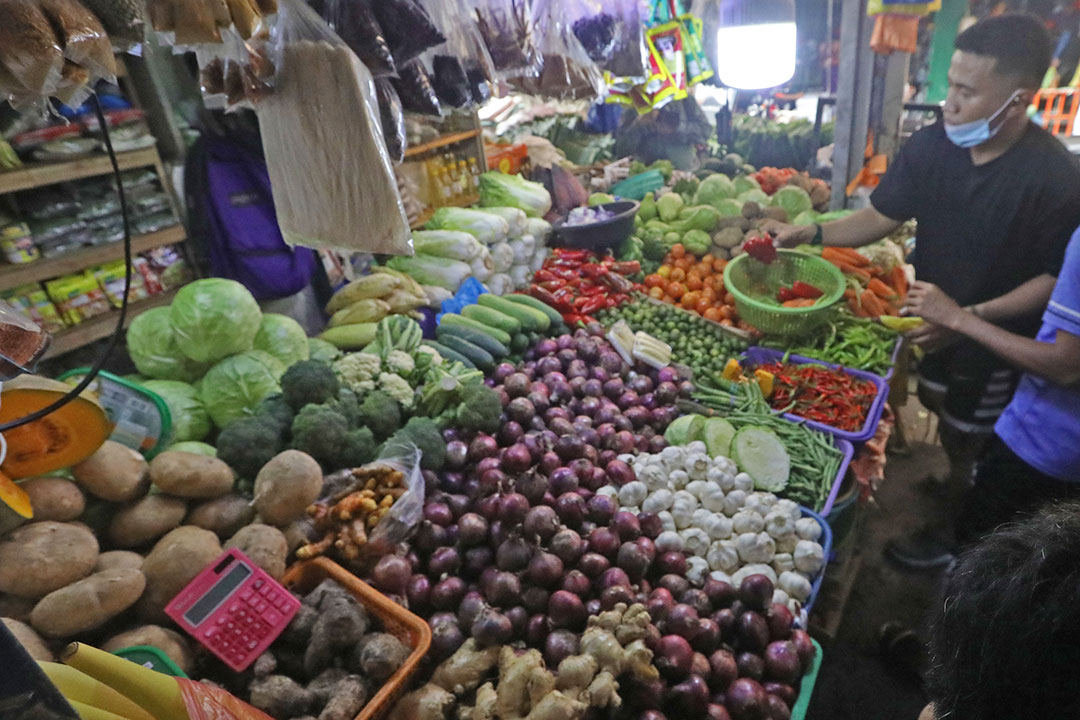




Philippines Trade Update: Trade trajectories trend along
 DOWNLOAD
DOWNLOAD

Policy Rate Updates: Double cut finale
 DOWNLOAD
DOWNLOAD

Monthly Economic Update: One for the road
 DOWNLOAD
DOWNLOAD


Slower October inflation likely to ease pressure on BSP to tighten policy

Head inflation may ease to 5.3% in October, which would put less pressure for the Bangko Sentral ng Pilipinas (BSP) to further tighten monetary policy, according to Pantheon Macroeconomics.
However, Bank of the Philippine Islands (BPI) said another rate hike cannot be ruled out at the Monetary Board’s Nov. 16 meeting if the October print was faster than expected and the peso further depreciates against the US dollar.
In a note dated Oct. 30, Pantheon Macroeconomics Chief Emerging Asia Economist Miguel Chanco and Senior Asia Economist Moorthy Krshnan said Philippine inflation may still return to the 2-4% target band by the end of the year.
“Indeed, we expect inflation for October to fall to 5.3%, from September’s four-month high of 6.1%, as the reversal of the August surge in rice prices finally filters through; it should have in the last report,” the UK-based think tank said.
With easing October inflation, Pantheon Macroeconomics sees no rate action from the BSP at its last two meetings for this year.
“We are maintaining our end-2024 rate forecast of 5.5% too, implying a more pronounced unwinding of one of the region’s most aggressive rate-hiking cycles, which could start as early as February, if our relatively benign outlook for inflation and downbeat view on growth prove accurate,” it said.
The BSP last week hiked its key policy interest rate by 25 basis points (bps) to a fresh 16-year high of 6.5% in an off-cycle move. This has brought the cumulative rate hikes to 450 bps since May 2022.
Meanwhile, BPI Lead Economist Emilio S. Neri, Jr. said another rate increase is still possible on Nov. 16 since it would be based on the upcoming inflation data as well as the peso-dollar exchange rate.
“An inflation print significantly higher than 6.1% might trigger another rate hike in that meeting. Aside from this, the central bank may also consider a rate hike if the exchange rate breaches the P57 level and moves closer to P58,” he said.
The Philippine central bank is scheduled to release its October inflation forecast today (Tuesday) while the local statistics agency will release the inflation data on Nov. 7.
Inflation quickened for a second straight month to 6.1% in September. It also marked the 18th consecutive month inflation was above the BSP’s 2-4% target range. This brought the nine-month average inflation to 6.6%.
DBS Bank Senior Economist Radhika Rao said the off-cycle rate hike was a preemptive move ahead of the release of October inflation, “which is expected to show another jump on the back of high food and fuel prices.”
“The door remains open for a follow-up hike this quarter if conditions warrant. We pencil in another increase this quarter, followed by a prolonged pause into the first half of 2024,” she said in a note.
BSP Governor Eli M. Remolona, Jr. on Friday said there is a “good chance” the BSP will not hike at its meeting on Nov. 16, as he expects October inflation to ease.
The central bank currently sees full-year inflation at 5.8% for 2023, before declining to 3.5% in 2024 and 3.4% in 2025. But officials said the BSP will be revising its inflation forecasts on Nov. 16.
BPI’s Mr. Neri said market players should not downplay the effectiveness of a rate hike in taming inflation.
“Monetary policy continues to have a role in managing inflation even if the cause is mostly on the supply side. Inflation driven by supply may eventually lead to second-round effects, which the BSP aims to counter with its rate hikes,” he said.
The BSP’s credibility as an inflation-targeting central bank is another reason why a rate hike was necessary, despite high consumer prices being mostly driven by supply-side issues.
“The rate hike is a statement from the BSP that it is determined to bring inflation back to its target. Inflation expectations may shoot up further if the market doesn’t see any action from the BSP. It might hurt the BSP’s credibility and make it more difficult to bring down inflation,” Mr. Neri said.
He noted the peso may continue to depreciate against the US dollar even after the rate increase, as market players consider substantial imports, global financial market developments, and the central banks’ future policy moves.
He noted that remittances during the holiday season may offset some of the pressure, but the movements of the local currency for the rest of 2023 would largely depend on what the US Federal Reserve does.
“Once the Fed is done hiking, the peso may strengthen as markets will likely assess the possibility of rate cuts. If a recession in the US happens, the Fed may cut its rates and the BSP will likely follow,” he said.
The US Federal Reserve kept its own policy rates at 5.25-5.5% last month — its highest level in 22 years. From March 2022 to July 2023, the Fed has raised a total of 525 bps.
The local unit closed at P56.955 per dollar on Friday, gaining half a centavo from its P56.96 finish on Thursday, based on Bankers Association of the Philippines data.
“But in this situation, the appreciation of the local currency will likely be smaller compared to other currencies given the still substantial current account deficit of the Philippines this year and in 2024,” Mr. Neri added.
In the second quarter, the current account deficit reached $3.6 billion, equivalent to -3.4% of gross domestic product (GDP). This brought the current account deficit at $8.2 billion (-4% of GDP) in the first semester.
The BSP projects the current account deficit to reach $11.1 billion this year (-2.5% of GDP). — Keisha B. Ta-asan, Reporter
This article originally appeared on bworldonline.com





 By BusinessWorld
By BusinessWorld